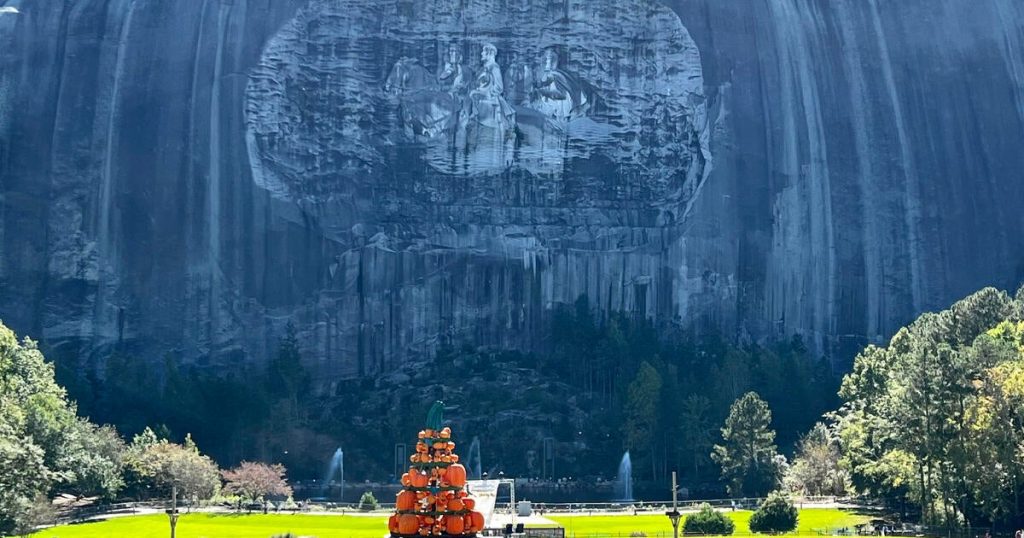Stone Mountain Park in Georgia, known for its controversial history and significant Confederate monument, is experiencing renewed debates over its identity and representation. The 3,200-acre recreational area draws over 4 million visitors annually, primarily due to its prominent carving of Confederate leaders. The Stone Mountain Action Coalition is at the forefront of a movement advocating for a shift away from the park’s divisive symbolism, proposing educational initiatives that emphasize the natural history and broader narratives of the region.
| Article Subheadings |
|---|
| 1) Historical Significance of Stone Mountain |
| 2) Modern Perspectives and Protests |
| 3) Educational Initiatives and Future Plans |
| 4) The Role of Community Activists |
| 5) Broader Implications for Southern Heritage |
Historical Significance of Stone Mountain
Stone Mountain is a site of deep historical relevance, predominantly recognized for its gigantic sculpture of Confederate President Jefferson Davis, alongside generals Robert E. Lee and Thomas “Stonewall” Jackson. The carving, one of the largest in the world, stands as a contentious emblem of the Confederacy and has been the backdrop for numerous gatherings and historic events, most infamously those associated with the Ku Klux Klan during the 20th century. Established as a park in 1958, Stone Mountain has often acted as a rallying point for those advocating white supremacy, solidifying the complex legacy of race relations in the area.
Modern Perspectives and Protests
Amid rising awareness of social justice issues, the public discourse surrounding Stone Mountain has intensified. Community members and activists, spearheaded by groups like the Stone Mountain Action Coalition (SMAC), assert the necessity of transforming the park into a space that embraces inclusivity rather than division. Marcus Patton, a key member of SMAC, highlighted the disconnect between the park’s natural beauty and its historical associations with racism. He lamented that the identity of Stone Mountain is often overshadowed by its Confederate connotations, stating, “Many people refer to Stone Mountain. And what they’re talking about is the Confederate aspects of it.”
Educational Initiatives and Future Plans
In an effort to reshape the narrative surrounding Stone Mountain, state authorities have undertaken significant projects designed to educate the public on both natural and cultural histories. A cornerstone of this initiative is the $11 million “Truth Telling” center, which is projected to open this fall. This center will feature exhibits that discuss not only the geological and ecological importance of Stone Mountain but also confront its historical ties to the Confederacy, referred to by the park authorities as “warts” of Georgia and Southern history.
The Role of Community Activists
Activists like Parker Short have begun leveraging social media to galvanize support for a reimagined Stone Mountain, endorsing its potential as a comprehensive museum dedicated to Civil War and Civil Rights history. In a widely circulated video, Short argued that “Stone Mountain would be best served as a Georgia Civil War, Civil Rights Georgia History museum,” emphasizing the importance of presenting a balanced and truthful account of history that encompasses the experiences of all Georgians, especially marginalized communities. This sentiment is echoed by other local activists, who echo the call for a park that acknowledges complexities rather than hiding them.
Broader Implications for Southern Heritage
The ongoing debates surrounding Stone Mountain are reflective of a larger nationwide re-examination of monuments tied to the Confederacy and their implications on contemporary society. As many Southern states grapple with their heritage and the enduring impacts of systemic racism, the discussions in Stone Mountain may serve as a microcosm of this struggle. Stone Mountain should not simply be viewed through the lens of its past; it must also be understood in the context of how these historical narratives shape present-day identities and social justice movements.
| No. | Key Points |
|---|---|
| 1 | Stone Mountain Park is steeped in controversial history and is home to one of the largest Confederate carvings in the United States. |
| 2 | The Stone Mountain Action Coalition is advocating for a more inclusive representation that addresses the park’s historical context. |
| 3 | A new “Truth Telling” center is set to open, aiming to educate visitors about both the natural history and the problematic aspects of local heritage. |
| 4 | Activists are pushing for a rebranding of Stone Mountain as a site dedicated to Civil War and Civil Rights history. |
| 5 | The debates surrounding the park reflect broader national conversations about race, heritage, and how history is remembered. |
Summary
The discussions around Stone Mountain Park symbolize a pivotal moment in American society, highlighting the tensions between historical memory and progressive values. With movements advocating for inclusivity and educational reform, the future of the park remains uncertain. As efforts to reshape its narrative continue to unfold, Stone Mountain serves as a poignant reminder of America’s complex relationship with its past and the ongoing quest for social justice.
Frequently Asked Questions
Question: Why is Stone Mountain Park controversial?
Stone Mountain Park is controversial due to its prominent Confederate carving, which symbolizes a painful history associated with slavery and racism. The site’s legacy has made it a focal point for debates surrounding race relations in modern America.
Question: What initiatives are being proposed to change Stone Mountain Park?
Activists are advocating for initiatives that would transform the park into a more inclusive space, including educational programs and a new “Truth Telling” center aimed at providing a comprehensive understanding of both the natural and cultural histories associated with Stone Mountain.
Question: How are local activists involved in the movement regarding Stone Mountain?
Local activists, including members of the Stone Mountain Action Coalition, are spearheading the movement for change by calling for a focus on inclusivity and education. They use social media and public advocacy to promote a vision for the park that recognizes the complexities of its history, rather than merely glorifying its Confederate symbols.


